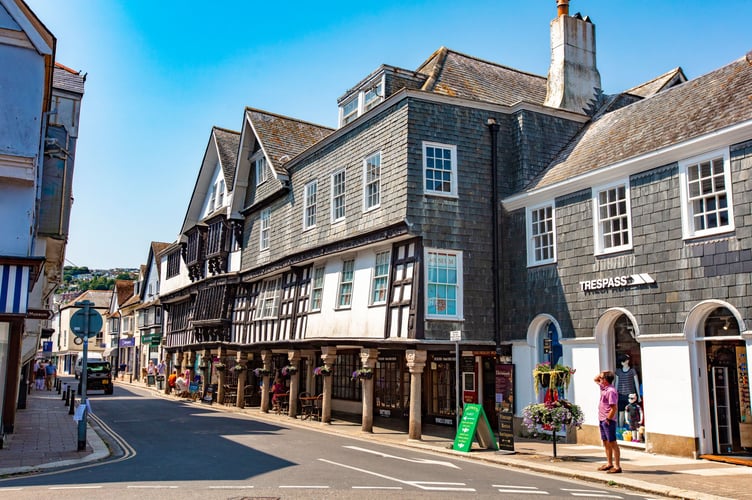To see the collections at Dartmouth Museum properly will probably take a couple of hours but your time will be repaid by a fascinating collection of multiple aspects of local life.
My guide was Vice Chairman Jonathan Turner who guided me through the rooms, pointing out items of interest along the way.

Jonathan said: “We've got a sketchbook of Arthur Holdsworth who was MP, Mayor and was a great sketcher of ships in particular but also of landscapes around Dartmouth and indeed he actually did a tour of Britain so we have drawings here of around 1800.
“The Holdsworths were dominant until about the 1830s and when they lost their position as MPs to the Seal family who'd arrive from Jersey in 1740-ish and during the 18th century built up their power, their land and their franchise in the town.
“They were responsible for a lot of the improvements in the town, the new roads, the new marketplace and some of the shipbuilding that happened as well but they controlled the town with an iron fist.”

Next to World War II and Jonathan explained its scope:
“It covers principally the D-Day preparations when the American 11th Amphibious Division was based in Dartmouth and they left for Omaha Beach.
“I think it was on Monday June 5 with something like 485 ships from Dartmouth itself so that's an amazing achievement.
“We also commemorate Exercise Tiger where more people were actually killed when German e-boats disrupted a practice off Slapton resulting in the deaths of up to 900 soldiers which was probably as many as died on the beach when D-Day actually happened.”

Other things of interest include eight films around 50 minutes of Dartmouth all taken drawn during one month in 1839 by a lady called Miss C.B. Hunt.
Jonathan continued: “We have a picture of 20 views of Dartmouth all at once and she ended up doing one oil painting which is just outside in the Shambles in 1839.”

Jonathan described an imposing contemporary painting: “The Shambles is here which is where the slaughterhouse and the butchers were and the story behind this fantastic painting which has just been given to the museum by artist David Marsh.
“It shows Dartmouth in 1620 when the Mayflower arrived.
“The landowner operated tidal mills along Foss Street, which is now the shopping street of the town, and the townspeople had to walk all the way around the mill pond which is probably about at least three quarters of a mile.”

The Mayflower and the Speedwell take us to the story of the Pilgrim Fathers as Jonathan explained: “They came originally from Boston then went to Leuven in Holland but they weren't happy there.
“It also illustrates the story with a fantastic hand-built, to scale model of the Mayflower.
“You can see that it's a cutaway model and the life on board the ship is illustrated
“They've even got pigs and everything was made locally, the barrels, the rope was twisted and created locally and everything was hand turned and made here.”





Comments
This article has no comments yet. Be the first to leave a comment.